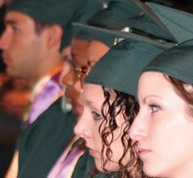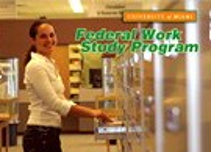
Financial Aid Process
One of the most common mistake many students and parents make is assuming that they can’t afford a college education. Don’t be intimidated or discouraged by cost of college until you can determine how much financial aid is available to you. Since financial aid is comprised of grants, scholarships, student loans and work-study programs, it can significantly lower the cost of college to make it more affordable for many students.
The two factors that are used to determine the amount of student aid and who gets it are: merit-based and need- based.
- Merit-based – is given to students who excel in certain areas of academics, athletics, music, etc. It is also given to students who intends to have a career path in an area that will benefit their community, state or country (such as science, math, engineering or teaching).
- Need-based – is given to students who can demonstrate the lack of financial resources to pay for their college education.In some instances, student financial aid programs uses both merit-based and need- based to determine the amount of eligibility given to the students.The process all begins with the Free Application for Federal Student Aid or FAFSA. By completing the FAFSA, you can apply for student financial aid programs at different colleges from different levels of government (federal, state, county or city), institutional or private organizations. It is critical that the FAFSA be completed, reviewed and submitted as close to January 1st as possible. This will give you a better chance for qualifying for more assistance.
Message From The Dean – Bob Fulcomer
I want to first wish you a Happy New 2014 Year! Hope you had a wonderful celebration with your family.
As we begin 2014, January is very critical for many students who intend to go to college in the upcoming Fall 2014 school year. This is the time when both parents and students need to prepare and submit their FAFSA application to their respected school. It is very important that you work with your HIFE Coach to determine the application deadlines for each school that you are applying to in order to submit your applications in time. Now is the time to get your financial documents in order and start your college application process. Have a great year!
Federal Work Study Program
Many students who do not receive enough grants, scholarships or student loans to pay for their college cost can also apply for additional funding through the Federal Work Study Program (FWS Program), a key component of Financial Aid. The FWS Program provides students additional funding to assist with the college costs. More than 3,000 colleges and universities throughout the country participate in the FWS Program. FWS is available for many undergraduate and graduate students. The financial aid office from each sch ool is responsible to determine the amount of FWS needed for each student and this may vary from each school. Many work-study jobs available are either on- campus or off-campus and are related to certain college career or within the community service arena. The amount paid in the work-study jobs are usually at the federal minimum wage depending on each school. The financial aid  department normally posts the different jobs available for you to apply for each semester which may range from a food server at a cafeteria, a re
department normally posts the different jobs available for you to apply for each semester which may range from a food server at a cafeteria, a re ceptionist at an administrative office, a library assistant or a gym monitor. Most FWS limits the number of hours you can work to between 10-15 hours per week.
ceptionist at an administrative office, a library assistant or a gym monitor. Most FWS limits the number of hours you can work to between 10-15 hours per week.
Your eligibility is based on your need as factored in when you complete your FAFSA application. Each school uses a standard formula to divide the amount each student is eligible for the Federal Work Study Program. The formula includes the parent’s income and assets, the student’s income and assets as well as the size of your family members attending the college.
Featured University – Rockland Community College
Rockland Community College is the only public higher education institution in Rockland County. It has served as an educational resource for Rockland since 1959, offering small classes, personal attention and caring faculty. In addition to the main campus in Suffern, the College operates an Extension Center in Haverstraw. Over 11,000 people are enrolled in credit and non-credit courses, and over 200,000 visit the campus each year for cultural, recreational and commercial events.
The Region
Located in the historic and scenic Hudson Valley only 25 miles northwest of New York City, picturesque Rockland offers the best of all worlds, including recreational and cultural attractions and easy access to the educational and artistic resources of the city. Center for Personal & Professional Development Several thousand people are served by Continuing Education programs each year, including corporate and workforce training, personal development and programs for children and seniors.
Academics
The College offers 47 programs in the humanities, social sciences, arts, technologies, business, health professions, mathematics and sciences, including 39 associate’s degrees and 8 one- year certificate programs.
Students
Enrollment of over 8,000 full- and part-time students includes 125 international students and 1,500 students over 30 years old.
Student Satisfaction
In a recent student opinion survey, 90% of students who responded said that RCC had met or exceeded their expectations.
Acclaimed Honors Program The Sam Draper Mentored/ Talented Student (M/TS) Honors Program is a nationally acclaimed, rigorous academic program for liberal arts and business students seeking to transfer to premier colleges. Graduates transfer to such colleges as Harvard, Yale, Cornell, University of Pennsylvania and Smith. Approximately 300 students are currently enrolled in the Honors Program. The program was awarded a coveted FIPSE grant from the U.S. Department of Education to serve as a model for community college honors programs throughout the country.
Faculty
A distinguished faculty comprised of about 119 full-time and 400 part-time members includes numerous Fulbright Scholars, SUNY Chancellor’s Award winners, published authors and artists. Average class size of 22 allows faculty members to work one-on-one with students.
Source: www.sunyrockland.edu
Coach’s Corner: It’s FAFSA 
January is the time of year when most students are applying to colleges and universities. However, the most important application to pay close attention to is the FAFSA (Free Application For Federal Student Aid).
FAFSA deadlines are set by federal and state agencies, as well as individual school financial aid offices, and often vary widely across the country. Certain schools have deadlines as early as the second or third week in January.
Applicants must pay attention to deadline specifics, as some refer to the date by which individual FAFSAs must be submitted, while others refer to the date by which individual FAFSAs must be fully processed. Most students often mistakenly confuse the two and therefore do not meet the required deadlines.
FAFSA is used by aid providers to determine the amount of the student’s Expected Family Contribution (EFC), which is the amount that they expect the student’s family could contribute toward the student’s college education.
FAFSA is often over 100 plus questions long and can cover various areas from a student’s family situation, to the student’s educational background and experience, the student’s prospective desired colleges, the student’s finances, the student’s employment, the student’s parents’ finances and much more. Whether or not parent financial information is required depends on whether or not the student is determined to still be a dependent of one of their parents.
Be sure to consult with your HIFE CPP Coach to get immediate assistance in completing the FAFSA.



